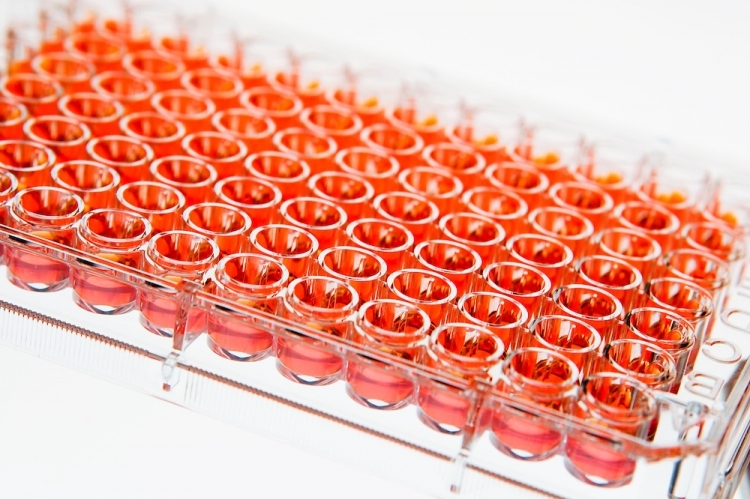Pyrogen Testing
Long lasting and proven experience with in-vitro PBMC cell-based assays @ CellMade makes us the perfect partner for MAT testing!
In June 2021, the European Pharmacopoeia Commission took a significant step by deciding to phase out the rabbit pyrogen test (RPT) over the next five years, favoring modern methods like the Monocyte-Activation Test (MAT) for detecting both endotoxin and non-endotoxin pyrogens. This transition impacts 59 Ph. Eur. texts spanning various sectors such as vaccines, antibiotics, and containers. Although the MAT emerges as a leading alternative, its successful implementation necessitates optimization and validation tailored to each product.
To tackle these challenges, we offer customized pyrogen testing services, including product-specific validations, MAT feasibility testing, method development, and batch release testing. We ensure transparency and compliance with evolving Ph. Eur. standards by delivering comprehensive validation reports to our clients.
Principle of the Monocyte Activation Test
The standardized MAT assay and its corresponding acceptance criteria are outlined in the monograph 2.6.30 of the European Pharmacopoeia. The MAT functions by stimulating isolated human peripheral blood mononuclear cells (hPBMC) with product preparation encompassing both bacterial endotoxins and non-endotoxin pyrogens. The quantification is based on the release of the pro-inflammatory cytokine interleukin 6 (IL-6). The IL-6 released during the assay is calibrated using a reference endotoxin calibration curve (EDQM standard) and expressed in Endotoxin Equivalents per milliliter (EE/mL).
For the quantification of the pyrogenic load in a sample, Method A, in accordance with monograph 2.6.30 of the European Pharmacopoeia, can be employed. This method entails comparing the product preparation with a standard endotoxin dose-response curve. To pass the test, the contaminant concentration of the preparation being tested must be lower than the CLC (Contaminant Limit Concentration). Ensuring the precision and validity of the test requires meeting the criteria for the endotoxin standard curve. Additionally, tests should confirm that the preparation does not interfere with the MAT and that the MAT detects both endotoxins and non-endotoxin pyrogenic ligands. Finally, it should be ascertained that the preparation does not disrupt the ELISA detection system.
Where does the Monocyte Activation Test apply according to Ph.Eur.?
The Monocyte Activation Test (MAT) is a method used to detect pyrogenic contaminants in pharmaceutical products. According to the European Pharmacopoeia (Ph.Eur), the MAT is applicable primarily in cases where the Limulus Amebocyte Lysate (LAL) test may not be suitable or effective. The MAT is particularly useful for products that may contain non-endotoxin pyrogens, such as certain biological products, medical devices, and vaccines. These substances can trigger fever and other immune responses in humans, making their detection crucial for ensuring the safety and efficacy of pharmaceutical products. The MAT offers a complementary approach to the LAL test, providing a broader assessment of pyrogenic contamination and enhancing overall quality control in the pharmaceutical industry. The relevant chapters in the European Pharmacopoeia pertaining to the MAT include Chapter 2.6.30 for "Monocyte-activation test" and Chapter 5.1.10 for "Pyrogens or bacterial endotoxins." These chapters provide guidelines and standards for the implementation and interpretation of the MAT and other methods for detecting pyrogenic contaminants in pharmaceutical products.
Monocyte Activation Test services
CellMade offers a comprehensive range of Monocyte Activation Test (MAT) services, adhering to the standards outlined in the European Pharmacopeia chapter 2.6.30 (Method A, B, and/or C). The MAT serves as a crucial method for detecting potential pyrogen contamination, quantifying it relative to an international standard of endotoxin.
With a specialization in MAT testing for proteins and antibodies derived from both human and recombinant sources, CellMade ensures thorough and accurate assessments tailored to meet the specific needs of each customer. This includes conducting product-specific validations based on customer requirements, ensuring compliance with regulatory standards.
In addition to MAT execution, CellMade offers a suite of complementary services to streamline laboratory workflows and enhance efficiency. This encompasses MAT feasibility testing, method development, SOP (Standard Operating Procedure) writing, and in-process/batch release testing. These services are designed to alleviate the workload of client laboratories while ensuring the integrity and safety of their products.
Upon completion of testing, customers can expect to receive detailed reports outlining the tests conducted and the corresponding results. For in-process and batch release testing, a result letter is provided, summarizing the findings. Meanwhile, for validation purposes, a comprehensive report is furnished, offering insights into the testing procedures and outcomes.

| Référence | Type | Document |
|---|---|---|
| CM-PTT-2 | Application Note | What do international pharmaceutical regulatory bodies have to say about the MAT ? |
| CM-PTT-3 | Application Note | An improved monocyte activation test using cryopreserved pooled human mononuclear cells |
| CM-PTT-4 | Application Note | The monocyte activation test detects potentiated cytokine release resulting from the synergistic effect of endotoxin and non-endotoxin pyrogens |
| CM-PTT-5 | Application Note | Using the Monocyte Activation Test as a Stand-Alone Release Test for Medical Devices |
| CM-PTT-1 | Application Note | Long lasting experience with in-vitro PBMC cell-based assays @ CellMade |
| Référence | Type |
Services
| Ref | Services | Description | Price |
|---|---|---|---|
| CLM-MAT-1 | Method Suitability Testing | Validate MAT for quantitative pyrogen detection in defined pharmaceutical products or medical devices, including product concentration determination and demonstration of valid testing across three lots, per European Pharmacopoeia 2.6.30.
|
On request |
